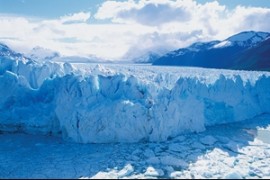
The melting of the glaciers in the mountains of Chile made the sea level rises faster than at any time in the last 350 years.
This is according to the study conducted by the researchers from the Universities at Aberystwyth, Exter and Stockholm. The team have based their studies in a longer time scale than the usual.
They have observed the changes happening in the 270 largest glaciers in Chile and Argentine since the “Little Ice Age”.
The researchers found out that in the last 30 years the glaciers have lost volume on average of “10 to 100 times faster”. Such melting of the ice fields has contributed to the global sea level.
The study was first published in the Journal Nature GeoScience, last Sunday.
Same with the previous studies, the team’s survey centred on remotely sensed images of the outlet glaciers of the south and north Patagonian ice fields, but unlike the past research they have used longer timescales than previous.
The team have studied the changes in the position of the two outlets since the Little Ice Age which took place in 1870 for the north and around 1650 for the south icefield.
According to the lead author of the study, Professor Neil Gl(–foul word(s) removed–)er from Aberystwyth University he said that the previous estimate of the global sea contribution from mountain glaciers is based on short time scale.
He explained that the past study only covered the last 30 years or so when satellite images can be used to calculate rates of glacier volume change.
In one of his statements, Gl(–foul word(s) removed–)er said that their research team took a different approach by using by using a new method that allows them to look at longer timescale.
In the journal Nature GeoScience, the team explained the melting of the Ice field in the South America since the Little Ice Age and calculated how much ice has been lost by the retreat and thinning of the glaciers.
Such calculations showed that there is a rapid increase of melt rate and thus their contribution to the global sea level.
“The work is significant because it is the first time anyone has made a direct estimate of the sea-level contribution from glaciers since the peak of the industrial revolution (between 1750-1850).” Dr. Stephen Harrison of the University of Exeter added.
